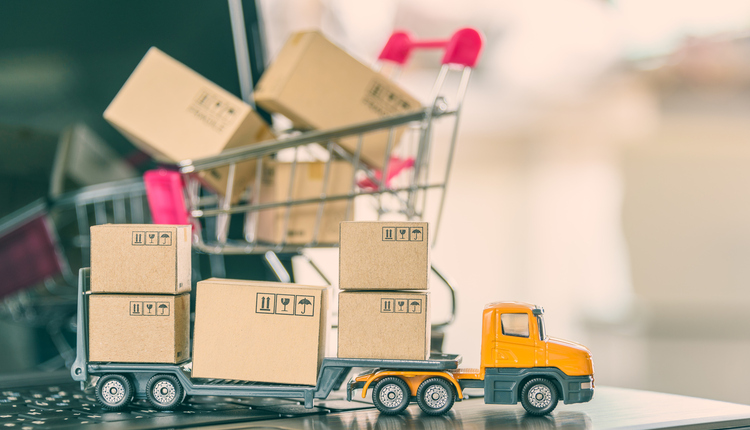The ever-growing popularity of online shopping has also dramatically increased the number of returns retailers need to mitigate. Not only expensive for the retailer, with the need to hold additional inventory and the cost per package, returns are also costly for the carriers if they are to pick up from consumers. They can also be frustrating for consumers as they must navigate multiple processes and act as a logistics provider by bringing their returns to a location that is more convenient for the retailer or carrier. Not to mention, there is a significant environmental impact in the reverse logistics process.
Retailers need to take a hard look at every aspect of their reverse logistics process and implement structural changes to see better outcomes. Those that don’t have the capabilities internally to rectify these challenges need to align with strategic partners that offer the innovative technology solutions that can. As we look ahead, here are a few things to consider:
Changing our mindset. First, consumers need to collectively reduce returns by more closely aligning what they order online with what they’ll actually use, and refrain from ordering things that they intend to return. At the same time, retailers need to optimize returns processes and technologies. The expansion of e-commerce should also bring about seeing returns as a strategic lever, similar to how companies used faster delivery to drive customer experience and revenue.
Changing returns policies. Return policies matter and should be strategically implemented, considering 73% of consumers say that a return policy has stopped them from buying an item from a particular brand. Some retailers have taken the drastic approach of charging restocking fees to deter returns. Other retailers are looking at returns from a loyalty perspective, the more loyal the consumer, the more lenient the policy. This is a better strategy to retain lifetime customers. Companies like DSW, Best Buy, and Saks are beginning to segment returns into tiers and rewarding their best consumers. For example, the best customers - based on how much they spend with the retailer annually and how often they return - get perks like free shipping and unlimited returns. Measuring customer acquisition costs (CAC) will be on the top of the list for those entering these waters.
Addressing shrinkage. Theft from retail stores is only part of the problem. Shrinkage includes inventory loss from other sources like returns fraud and human error. The current returns process has too many touchpoints where shrinkage can happen. For example, when items are inside a sealed box, bad-acting consumers can return a brick instead of a remote control. Retailers may not notice they did not receive their remote control for several weeks, and too many touches have happened by that time to truly understand who did what when. This causes up to two percent inventory loss annually. The future of returns is box-less and label-less returns pickups from consumers’ doorsteps, where pictures are taken of the item itself to start the product verification process.
New technologies are a gamechanger. Data-driven solutions that provide insight into each individual customer’s shopping habits are also emerging. Companies like Appriss are applying their technology to the retail world and are successfully curbing excess and fraudulent returns. This is how forward-thinking retailers are ensuring that abusive returners don’t ruin policies for everyone, while also reducing shipping costs and greenhouse gas emissions (with returns making up 25% of all e-commerce emissions).
The right return policy. Retailers need to be cognizant of keeping existing customers and capturing potential customers while also making sure they don’t lose money in the process. So what is the right return policy? It comes down to understanding why brands are making returns difficult in the first place, what works best for that brand, and the underlying costs that lie outside the operational boundaries.
Retailers need to remove the idea of mitigating returns as a whole. It’s not realistic, and even with best efforts, the rate of returns has managed to only increase over time. Retailers typically place the focus on returns in two strategic buckets: ease and hurdles. In reality, there should be one bucket: the consumer. Returns have a huge influence on the consumer’s buying decision. The returns process is a reflection of the shopping experience itself, a shadow of the brand or retailer. An efficient and transparent returns policy can strengthen a brand's reputation promoting loyal patronage, as 92% of consumers who have a positive return experience revisit brands for another purchase. Additionally, things like where customers return items matter. Consumers don’t want to have to bring returns back to a logistics provider. In fact, 32% say that was the most inconvenient part of the returns experience.
Returns are a part of shopping culture and play a major impact on purchasing decisions. It’s improbable that we are ever going to eliminate them. But we can take a different approach to how we manage them by transforming the problem into a solution that recaptures customers/dollars, data-driven decisions, and waste reduction, while improving supply chain efficiencies. Looking ahead, the retail winners will be those who place the customer first and reap the rewards as they adapt their reverse supply chains to their strategic advantage.
Christian Piller is co-founder and Chief Commercial Officer of Pollen Returns, a technology-led business that empowers D2C retailers to leverage their current inventory for better planning and capital utilization through quicker recovery of returns. Pollen Returns is a venture-backed company that is currently available in any US market and will be expanding overseas to Europe in the near future.
This article originally appeared in the July/August, 2023 issue of PARCEL.










